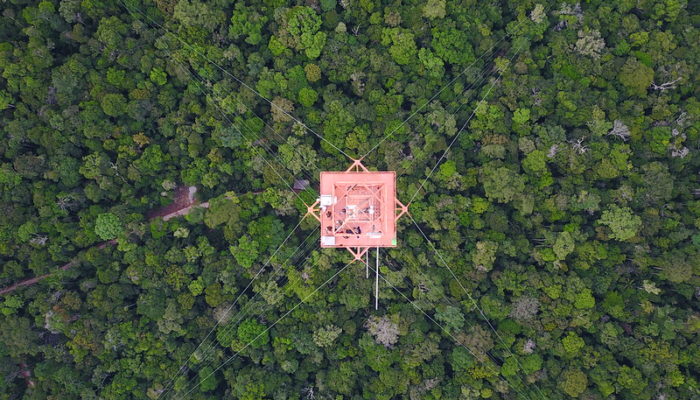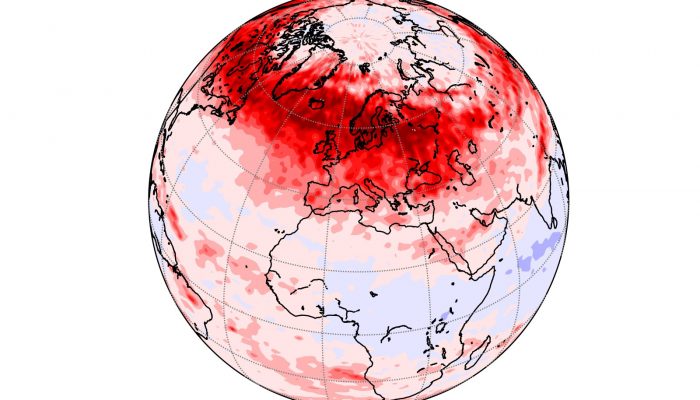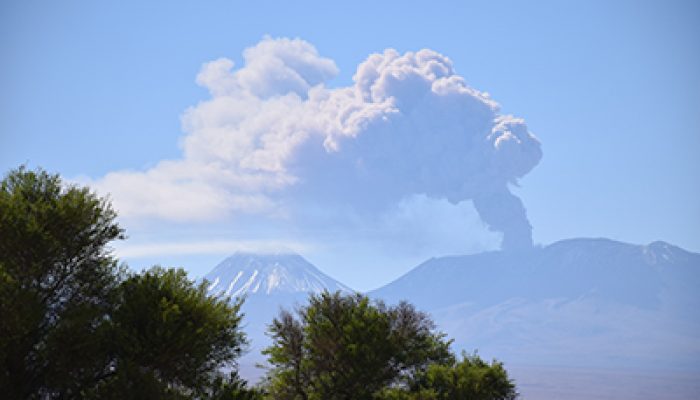Feature Image: Screenshot of the european weather Extremes: DrIvers, Predictability and Impacts (EDIPI) homepage. Background Image Credits: Copernicus Sentinel data, processed by ESA. Extreme weather events routinely have detrimental socio-economic impacts around the globe. In fact, weather-related events make up over 90% of natural disasters worldwide [1]. In the new millennium, the frequency of ...[Read More]
Atmospheric research in the middle of the Amazon forest: The Amazon Tall Tower Observatory celebrates its anniversary

It looks like a spike, orange against the blue sky, sticking out the green ocean of the Amazon forest: Standing 325 m tall, the Amazon Tall Tower Observatory (ATTO) is the highest construction in South America. This tower celebrates its 5th anniversary this year, while the ATTO research site, located ~150 km northeast of Manaus, Brazil, has been in operation for 10 years. During the past 5 years, ...[Read More]
A simple model of convection to study the atmospheric surface layer
Since being immortalised in Hollywood film, “the butterfly effect” has become a commonplace concept, despite its obscure origins. Its name derives from an object known as the Lorenz attractor, which has the form of a pair of butterfly wings (Fig. 1). It is a portrait of chaos, the underlying principle hindering long-term weather prediction: just a small change in initial conditions leads to vastly ...[Read More]
A brighter future for the Arctic

This is a follow-up from a previous publication. Recently, a new analysis of the impact of Black Carbon in the Arctic was conducted within a European Union Action. “Difficulty in evaluating, or even discerning, a particular landscape is related to the distance a culture has traveled from its own ancestral landscape. As temperate-zone people, we have long been ill-disposed toward deserts and ...[Read More]
Water vapor isotopes: a never ending story!
Water stables isotopes are commonly exploited in various types of archives for their information on past climate evolutions. Ice cores retrieved from polar ice sheets or high-altitude glaciers are probably the most famous type of climate archives. In ice cores, the message about past temperature variations is conserved in the ice, formed from the snow falls whose isotopic composition vary with the ...[Read More]
The puzzle of high Arctic aerosols

Current Position: 86°24’ N, 13°29’E (17th September 2018) The Arctic Ocean 2018 Expedition drifted for 33 days in the high Arctic and is now heading back south to Tromsø, Norway. With continuous aerosol observations, we hope to be able to add new pieces to the high Arctic aerosol puzzle to create a more complete picture that can help us to improve our understanding of the surface energy budget in ...[Read More]
The perfect ice floe
Current position: 89°31.85 N, 62°0.45 E, drifting with a multi-year ice floe (24th August 2018) With a little more than three weeks into the Arctic Ocean 2018 Expedition, the team has found the right ice floe and settled down to routine operations. Finding the perfect ice floe for an interdisciplinary science cruise is not an easy task. The Arctic Ocean 2018 Expedition aims to understand the linka ...[Read More]
Into the mist of studying the mystery of Arctic low level clouds
This post is the first of a “live-series of blog post” that will be written by Julia Schmale while she is participating in the Arctic Ocean 2018 expedition. Low level Arctic clouds are still a mystery to the atmospheric science community. To understand their role the present and future Arctic climate, the Arctic Ocean 2018 Expedition is currently under way with an international group o ...[Read More]
Buckle up! Its about to get bumpy on the plane.
Clear-Air Turbulence (CAT) is a major hazard to the aviation industry. If you have ever been on a plane you have probably heard the pilots warn that clear-air turbulence could occur at any time so always wear your seatbelt. Most people will have experienced it for themselves and wanted to grip their seat. However, severe turbulence capable of causing serious passengers injuries is rare. It is defi ...[Read More]
Volcanic Ash Particles Hold Clues to Their History and Effects
Volcanic Ash as an Active Agent in the Earth System (VA3): Combining Models and Experiments; Hamburg, Germany, 12–13 September 2016 Volcanic ash is a spectacular companion of volcanic activity that carries valuable information about the subsurface processes. It also poses a range of severe hazards to public health, infrastructure, aviation, and agriculture, and it plays a significant role in bioge ...[Read More]







